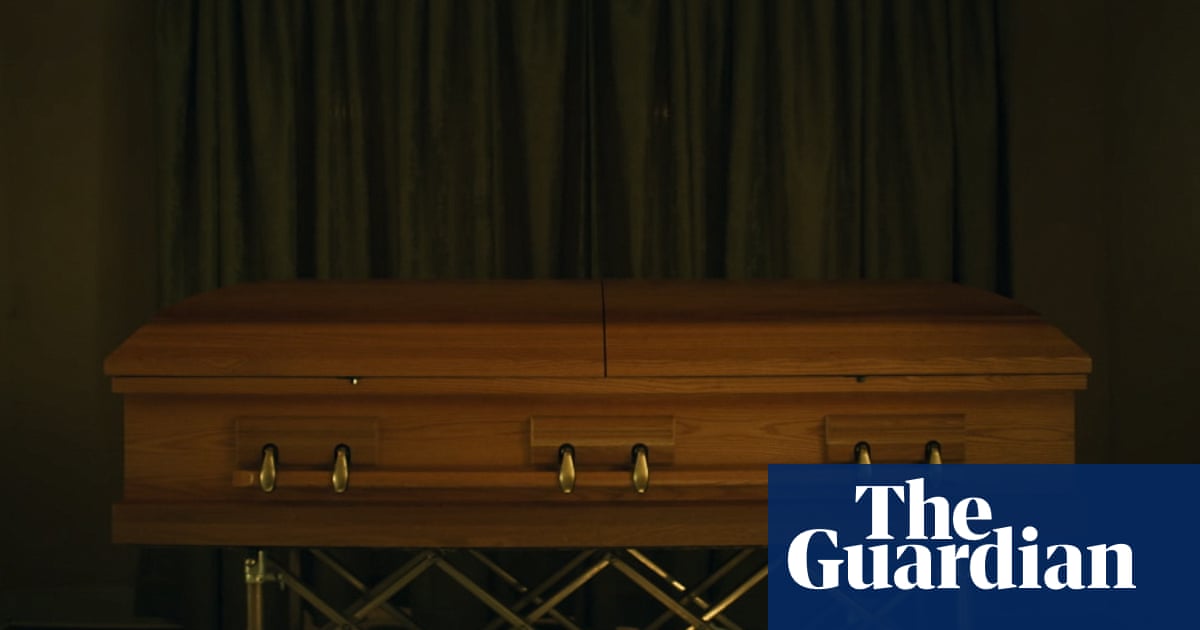HBO’s new docuseries, The Mortician, is already generating buzz for its disturbing look into the Lamb funeral home scandal in Los Angeles. This three-part series uncovers the shocking unethical and illegal practices that rocked the mortuary industry in the 1980s, revealing a twisted criminal case involving mass cremations, stolen body parts, and falsified remains. Director Joshua Rofé’s unsettling exploration promises to leave viewers questioning their own final arrangements.
This article delves into the key aspects of The Mortician, focusing on the crimes committed by David Sconce and his family, the impact on the mortuary industry, and the most shocking revelations from the documentary. We’ll explore the legal aftermath, Sconce’s recent interview, and Rofé’s inspirations, providing a comprehensive overview of this jaw-dropping scandal.
The Lamb Funeral Home Scandal: A Descent into Depravity
The Lamb funeral home, co-owned by David Sconce, became the epicenter of a mortuary scandal that would forever change regulations. Based in Pasadena, California, the mortuary engaged in practices that are hard to fathom.
Sconce and his family were accused of:
- Performing mass cremations in a ceramics kiln.
- Stealing and selling gold jewelry and dental fillings from corpses.
- Illegally harvesting and selling organs.
- Providing families with fake ashes after the deaths of their loved ones.
- Threatening violence against competitors in the mortuary industry.
These actions led to significant reforms aimed at safeguarding consumers in the mortuary industry, including laws that allowed for crematorium inspections and categorized the theft of dental gold as a felony.
Director’s Shock: The Horrifying Details Unveiled in ‘The Mortician’
Joshua Rofé, the director behind The Mortician, expressed profound shock at the revelations he uncovered during production. In an interview, Rofé stated, “If you [are] shocked watching, do understand that I was shocked having it said to me in person.” This sentiment underscores the deeply disturbing nature of the case and the extent of Sconce’s depravity.
One of the most unsettling anecdotes, which Rofé found too extreme to include in the series, involved Louis Quinones, who transported bodies for cremation at Sconce’s mortuary. Quinones recounted discovering the body of a baby in a cold storage room, realizing he had already delivered fake ashes to the child’s mother weeks earlier.
This level of deceit and disregard for grieving families highlights the extreme ethical violations at the heart of the scandal.
Legal Aftermath and Industry Reforms Following the Scandal
The exposure of the Lamb funeral home’s crimes resulted in multiple incarcerations for David Sconce. The legal proceedings uncovered details of a criminal charge related to the death of a rival mortuary owner.
In response to the scandal, significant reforms were implemented in the mortuary industry to protect consumers. These reforms included:
- Mandatory inspections of crematoriums.
- Criminalizing the unauthorized removal of dental gold and silver from corpses.
- Increased oversight and regulation of mortuary practices.
These measures aimed to prevent future abuses and ensure that mortuary services are conducted with integrity and respect.
Sconce’s Perspective: Rationalizing the Unthinkable
Despite the overwhelming evidence of his crimes, David Sconce remains largely unrepentant. In a recent interview, Sconce downplayed the significance of commingling ashes, stating, “To me, commingling of ash is not a big deal. I don’t put any value in anybody after they’re gone and dead.”
He further added, “That’s not your loved one anymore. And it never has been. Love them when they’re here. Period.” These comments reveal a disturbing lack of empathy and a complete disregard for the emotional and spiritual needs of grieving families.
Rofé noted that Sconce alternated between deflecting blame and rationalizing his actions, making it challenging to comprehend his mindset.
Director’s Inspiration: Noir Films and the Aesthetics of Death
Joshua Rofé drew inspiration from noir films when crafting The Mortician, aiming to capture the dark, unsettling atmosphere of classic movies like Sunset Boulevard, Chinatown and Mulholland Drive.
The Mission Revival-style mortuary, central to Sconce’s crimes, would fit seamlessly into the settings of these noir films, enhancing the sense of dread and moral decay. Rofé’s visual storytelling seeks to create a cinematic experience that reflects the gravity and grotesqueness of the events.
Conclusion: The Disturbing Legacy of ‘The Mortician’
The Mortician on HBO is set to be a deeply unsettling yet vital exploration of the Lamb funeral home scandal. Through interviews, archival footage, and expert analysis, the docuseries sheds light on the shocking crimes committed by David Sconce and the lasting impact on the mortuary industry.
The series serves as a reminder of the importance of ethical conduct and regulatory oversight in industries that handle sensitive matters. By exposing the depravity of Sconce’s actions, The Mortician prompts viewers to consider their own mortality and the arrangements they make for their loved ones.
With its gripping narrative and disturbing revelations, The Mortician is a must-watch for those interested in true crime, industry scandals, and the dark side of human nature. The series begins on HBO on June 1, inviting viewers to confront the jaw-dropping realities of the Lamb funeral home scandal and its legacy.

Leave a Reply